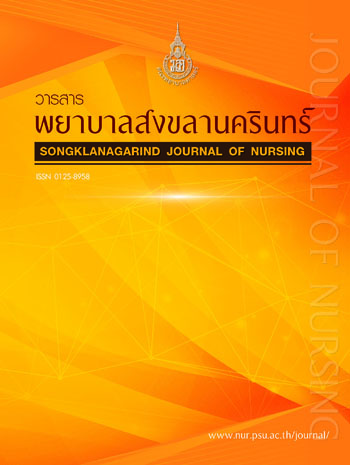Pain Management in Chronic and Acute Wounds: Moving from Evidence-Based to Practice
Main Article Content
Abstract
Pain in chronic and acute wounds cause so much suffering to patients. Although pain has been
specified as the fifth vital sign, pain management in patients with wounds is often found to be inadequate.Realizing importance of pain management, several organizations have developed many evidence-based practices for managing wound pain. These newly developed practices allow nurses to have apparent guidelines that can reduce variation of their practices. In addition, there are some relevant models related to implementation of evidence-based practices that can facilitate integration of knowledge into nursing practices. Pain management in chronic and acute wounds based on evidence-based practices consisted of assessing wound pain, addressing and treating other issues expected to cause of wound pain, using pharmacological and non-pharmacological approach to manage wound pain, and reassessing wound pain that will result in good outcomes to patients, and will elevate the level of quality and standard of nursing practices in the organization to meet international standards. However, implementation of evidence-based practices into routine practices is a complicated process. Inhibiting factors preventing evidence-based practices implementation such as evidence-based practices might be inappropriate for organizational culture and nurses did not realize in the importance of wound pain management. Therefore, nurses should have knowledge and understanding regarding chronic and acute wound pain management that relies on implementation of evidence-based practices into nursing practices in order to success in sustainability of nursing practice change.


